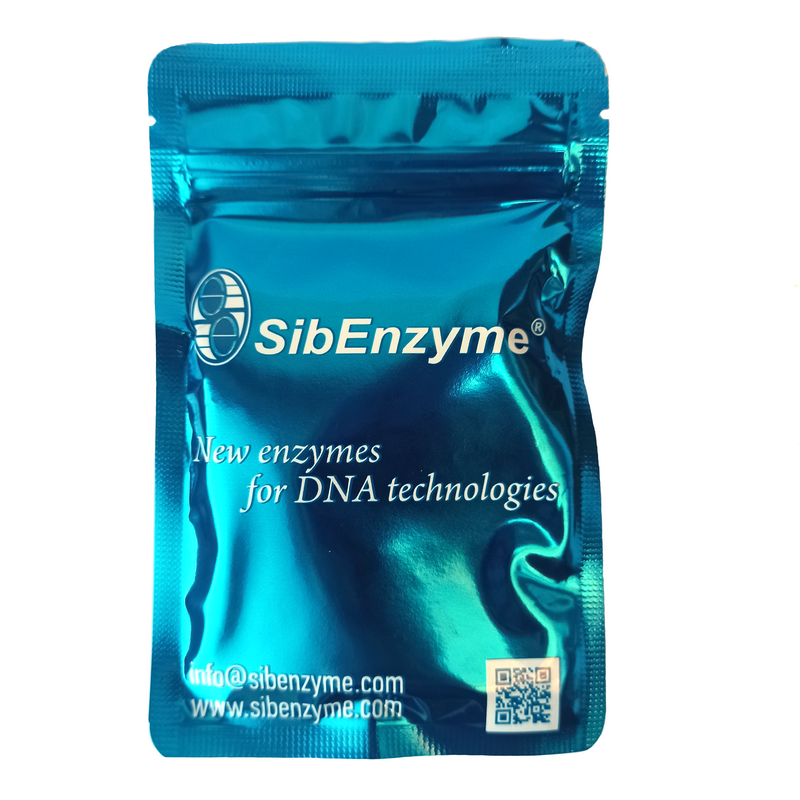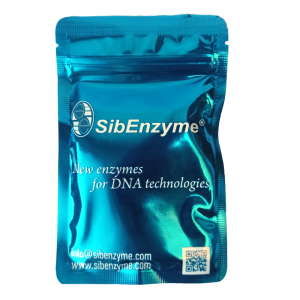Description
Recognition site and hydrolysis position:
| CATG | ↑CATG |
| GTAC | GTAC↓ |
Source: An E.coli strain that carries the cloned Fat I gene from Flavobacterium aquatile NL3
Unit definition:
One unit of the enzyme is the amount required to hydrolyze 1 μg of pUC19 DNA in 1 hour at 55°C in a total reaction volume of 50 μl.
Assayed on:
pUC19 DNA
Optimal SE-buffer: SE-buffer G
Enzyme activity (%):
| B | G | O | W | Y | ROSE |
| 10 | 100 | 25 | 10 | 50 | 100 |
Storage conditions: 10 mM Tris-HCl (pH 7.5); 50 mM KCl; 0,1 mM EDTA; 1 mM DTT; 200 μg/ml BSA; and 50% glycerol. Store at -20°C.
Ligations:
After 2-fold overdigestion with enzyme more than 90% of the DNA fragments can be ligated and recut.
Non-specific hydrolisis:
No nonspecific activity was detected after incubation of 1 μg of DNA with 3 u.a. of enzyme for 16 hours at 55°C.
Reagents Supplied with Enzyme:
Methylation sensitivity: Blocked by mCATG methylation
Notes: The minimum number of units that resulted in complete digestion of 1 μg of substrate DNA in 16 hours is 0,25.
FatI cleaves linear plasmid DNA at a rate 1.5-2 times higher than supercoiled plasmid DNA.
References:
Dedkov, V.S., Kileva, E.V., Popichenko, D.V., Degtyarev, S.K. Biotekhnologia #5, 3-7 (2002)
V.A. Chernukhin, M.A. Abdurashitov, V.N. Tomilov, D.A. Gonchar, S.Kh. Degtyarev Comparative restriction enzymes analysis of rat chromosomal DNA in vitro and in silico // Translated from “Ovchinnikov bulletin of biotechnology and physical and chemical biology” V.2, No 3, pp 39-46, 2006



